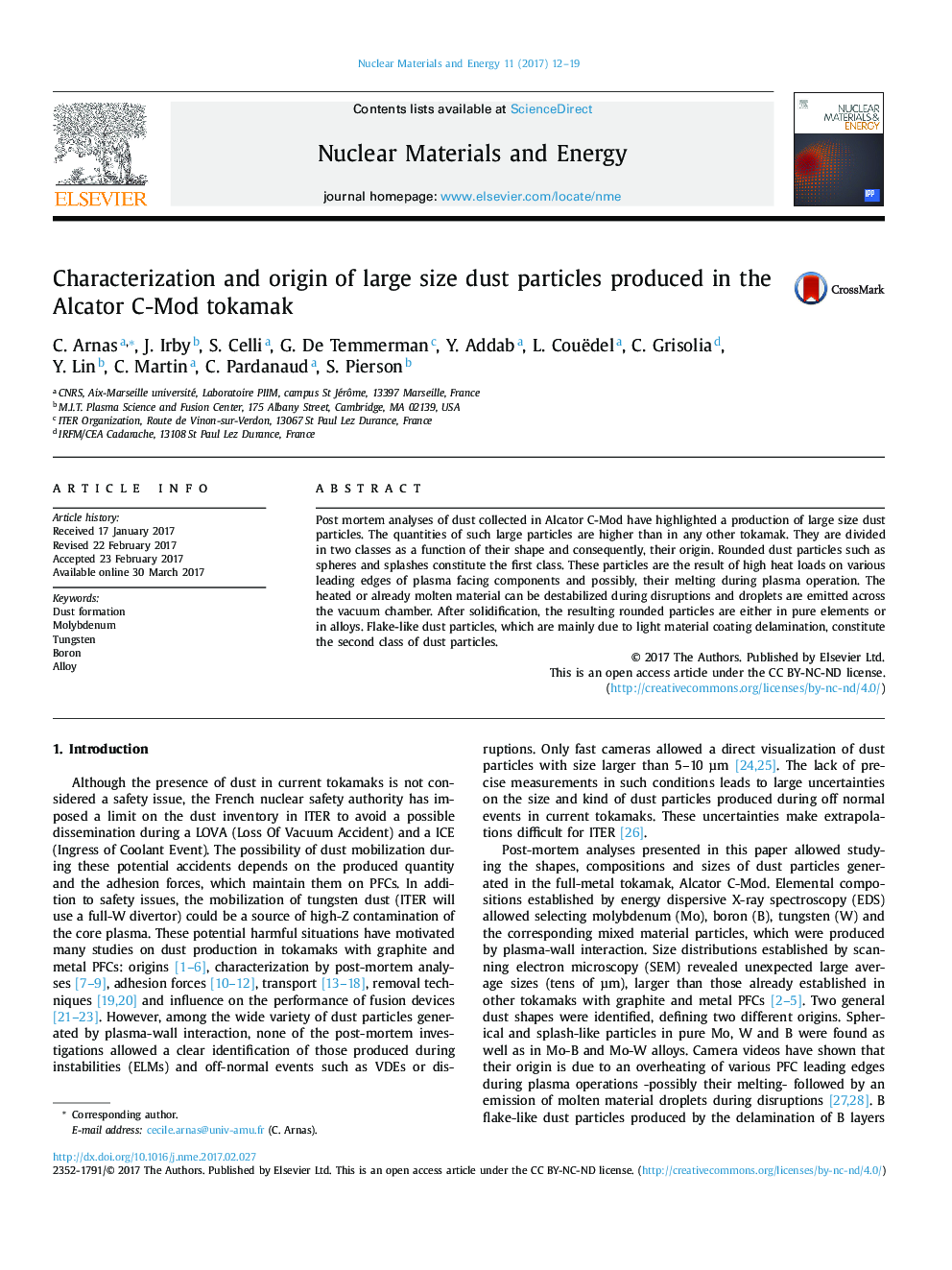| Article ID | Journal | Published Year | Pages | File Type |
|---|---|---|---|---|
| 5457092 | Nuclear Materials and Energy | 2017 | 8 Pages |
Abstract
Post mortem analyses of dust collected in Alcator C-Mod have highlighted a production of large size dust particles. The quantities of such large particles are higher than in any other tokamak. They are divided in two classes as a function of their shape and consequently, their origin. Rounded dust particles such as spheres and splashes constitute the first class. These particles are the result of high heat loads on various leading edges of plasma facing components and possibly, their melting during plasma operation. The heated or already molten material can be destabilized during disruptions and droplets are emitted across the vacuum chamber. After solidification, the resulting rounded particles are either in pure elements or in alloys. Flake-like dust particles, which are mainly due to light material coating delamination, constitute the second class of dust particles.
Related Topics
Physical Sciences and Engineering
Energy
Nuclear Energy and Engineering
Authors
C. Arnas, J. Irby, S. Celli, G. De Temmerman, Y. Addab, L. Couëdel, C. Grisolia, Y. Lin, C. Martin, C. Pardanaud, S. Pierson,
